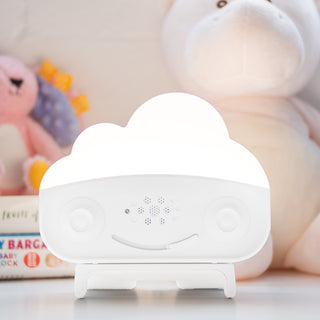Establishing a family routine with kids is easier said than done. But with school obligations, homework, and digital distractions, creating a routine is vital for emotional stability and family harmony. Not to mention, it also arms them with necessary skills that they’ll be able to use for the rest of their lives.
Therefore, it’s never too early to develop a family routine that everyone can follow. And as kids get older, they’ll appreciate having a structure that supports healthy habits for sleep, exercise, and communication.
While it might be hard to enforce at first, sticking with a routine will become easier over time. And eventually, doing these things will become second nature, allowing everyone to enjoy a more fulfilling life together!
Tips for Developing a Healthy Family Routine
Set Consistent Wake-Up and Bedtimes

Sleep is one of the most important factors to consider when creating a healthy family routine. Everyone (that includes both you and your child) needs adequate rest in order to tackle the day ahead of you. Therefore, you’ll want to make sure you set and stick with a consistent wake-up and bedtime.
But getting your little ones to sleep at a reasonable hour can be challenging (tip: use a white noise machine!). To help, create an evening routine to prepare them for the evening. Set aside time for washing up, bedtime stories, and anything else to help them sleep better at night.

Designate Roles
Ownership should be one of the first things you teach your children as they get older. By giving them specific tasks to follow, you’ll empower them to take responsibility. On top of that, it also builds confidence and gives them a sense of accomplishment.
Start by designating roles based on age and ability. Here are a few tasks to consider by age group, but we have a full list you can reference here:
Pre-Scool to Toddler (age 2 to 5):
- Put away toys
- Sweep or dust
- Collect dirty clothes
- Fold wash clothes
- Make beds
- Wipe up spills
Elementary (6 to 10):
- Load or unload the dishwasher
- Rake leaves
- Put groceries away
- Get mail
- Fold laundry
- Wipe counters and sinks
Middle School and High School (11-17):
- Clean tower/tub/toilet
- Meal plan
- Clean out fridge
- Mow lawn
- Vacuum
- Watch younger siblings
Once the chores are divvied out, make sure to clearly outline when and how they need to be done. Feel free to use lists, whiteboards, or any other organizational tools to keep track of the work.
Celebrate Successes

Positive reinforcement is key to getting your kids used to a new routine. Therefore, you’ll want to make sure to celebrate when they accomplish certain goals – no matter how big or how small they are.
Use a reward chart to help monitor the tasks and chores they have assigned. Not only will this help them stay organized, but it can also increase motivation! Once the tasks are complete, you can reward them with praise, a special treat, or a fun family outing.
Prioritize Family Time
Regular family time is important for a healthy home life. And while you might be around each other throughout the day, certain activities should be scheduled into your routine. This could be shared meals, game nights, or a family vacation. Essentially, anything that allows you to create long-lasting memories with each other!
Besides strengthening your bond, prioritizing family time also improves communication. That way, everyone knows the schedule and can make plans accordingly!
Make Time for Self-Care
This is essential for managing stress and maintaining peace within your household. While spending time together is vital, doing things to take care of our mental health is also important. And sometimes that means an activity alone!
Consider setting aside one hour a night to engage in an activity meant to relax and recharge. For parents, that could be yoga, a bubble bath, or even just quiet time. Kids can pick a hobby, like arts and crafts, sports, or reading. Your little ones may choose TV or video games but we recommend sticking with an activity doesn’t involve screen time!
Lead by Example
Creating a healthy routine starts with you as the parent. Children are much more likely to adhere to a routine when they see the same behavior from an adult. This is also your time to model the type of behavior you want to see from your child. After all, kids inherently emulate others (whether it’s good or bad!).
Create an Atmosphere of Open Communication
Every family has their own way of doing things, but it can be hard to know what is working and what isn’t working. Regular family check-ins will help everyone stay aligned. Encourage kids to provide feedback (good and bad) so you may adjust your routine in the future. We recommend a check-in once a week a first, although this can be less often once everyone is settled.
A large part of this open communication process is remaining flexible. If something needs to be changed (which it likely will), be open and respectful. And make sure to teach your kids to be the same!
Don’t Forget to Have Fun!
Just because it’s technically called a routine doesn’t mean it has to be boring. After all, being with each other should be fun! And while it may be difficult to get excited over chores and required tasks, always leave room for flexibility.
Including time for fun and spontaneity will keep the routine exciting. And by rewarding good behavior and celebrating accomplishments, you can turn routine-making into something enjoyable.
Implementing a family routine will undoubtedly strengthen your bond as a family unit. As long as you’re patient, flexible, and focused on positive reinforcement, your kids will happily embrace their new routines.






